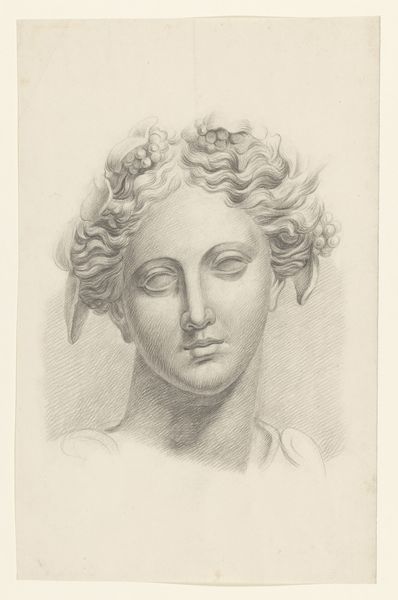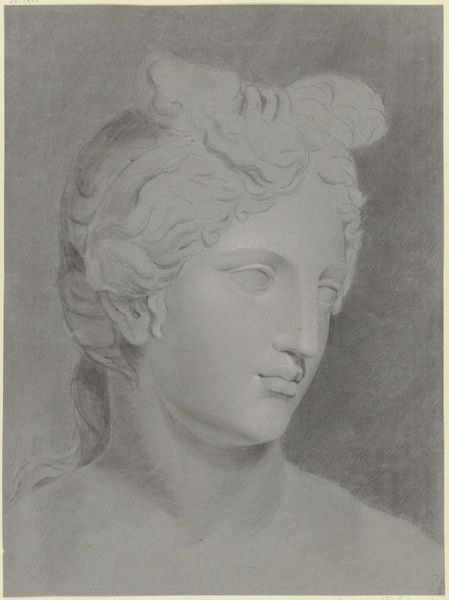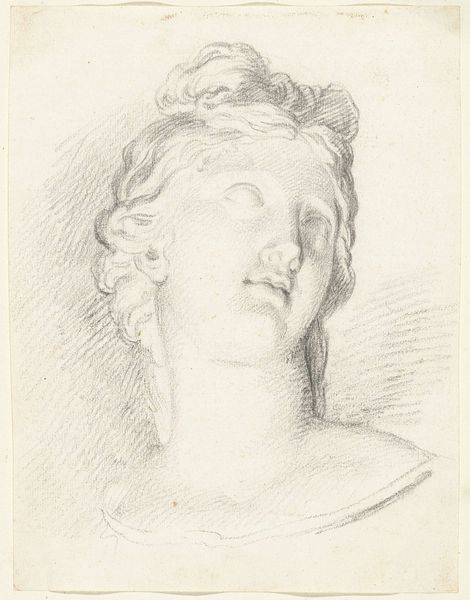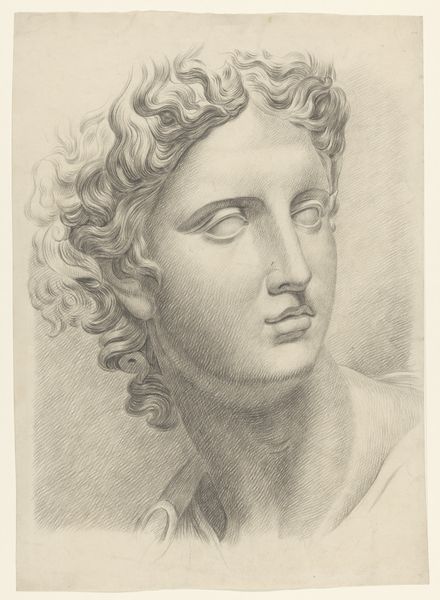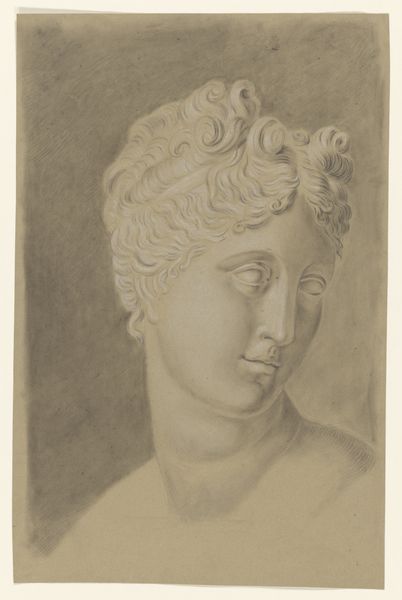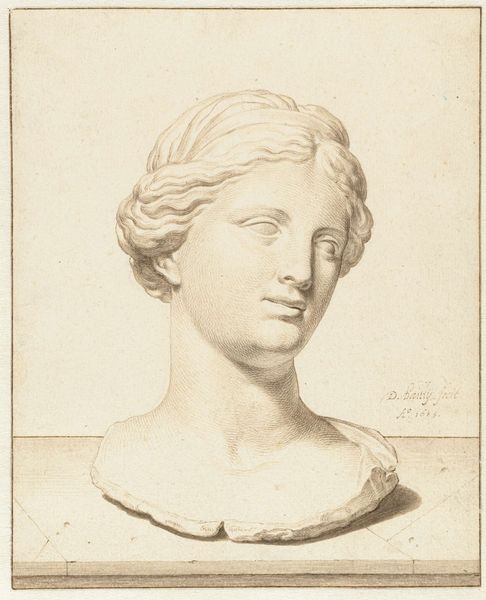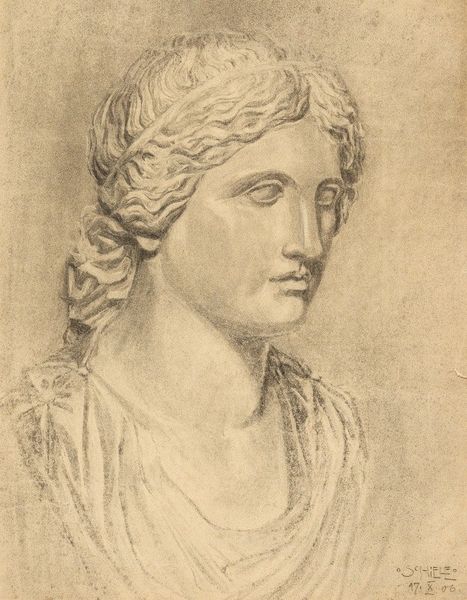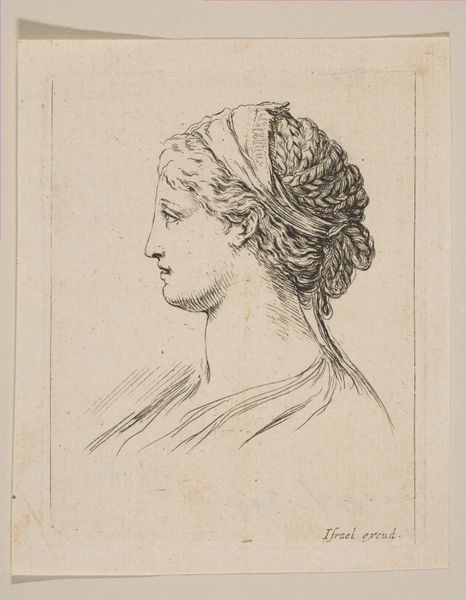
drawing, pencil, graphite
#
portrait
#
drawing
#
neoclacissism
#
pencil drawing
#
pencil
#
graphite
#
academic-art
Dimensions: height 478 mm, width 336 mm
Copyright: Rijks Museum: Open Domain
Curator: Immediately, I'm struck by the stillness. There's a serene quality that emanates from this portrait, despite the almost unsettling blankness of the eyes. Editor: That makes sense. This pencil drawing, made with graphite, by Johannes Tavenraat, circa 1825, titled "Plaster cast after an antique sculpture of a woman" gives insight into the Neoclassical devotion to reproducing classical forms. It’s currently held in the Rijksmuseum collection. Curator: So, the material reality here is that this isn't an original classical work, but a study, a copy. How did these plaster casts circulate? Who was able to access this imagery, and to what end? Were they used as models for artists in training, reinforcing specific aesthetic values, and if so, who benefitted from such aesthetic guidelines? Editor: Exactly. Plaster casts were essential tools for academic art instruction during the 19th century. They provided access to canonical sculptures for students who might not have had the opportunity to travel to see the originals, democratizing classical ideals even as they institutionalized them. Tavenraat, though a Dutch artist, here is participating in a much larger cultural trend that valued classical forms. The very act of reproducing ancient sculpture underscores the cultural power ancient forms exerted and reveals art's important connection to history. Curator: And looking at Tavenraat’s technique, the careful shading to imitate the play of light on plaster is particularly striking. He attempts to bring it back to life, breathe artistic expression into the material. Editor: The clean lines also tell us a lot about prevailing aesthetic taste. What's deliberately included, as well as what gets left out in its mark-making. You also get a glimpse into the market for drawings at this time. The image’s perceived 'value' in academic settings and its consumption habits by amateurs reveal how artistic styles get standardized through repetition. Curator: A point well-taken; I do enjoy thinking about the choices of mark-making. Editor: Ultimately, this work encourages one to consider the long trajectory of cultural norms perpetuated through artistic practices.
Comments
No comments
Be the first to comment and join the conversation on the ultimate creative platform.
